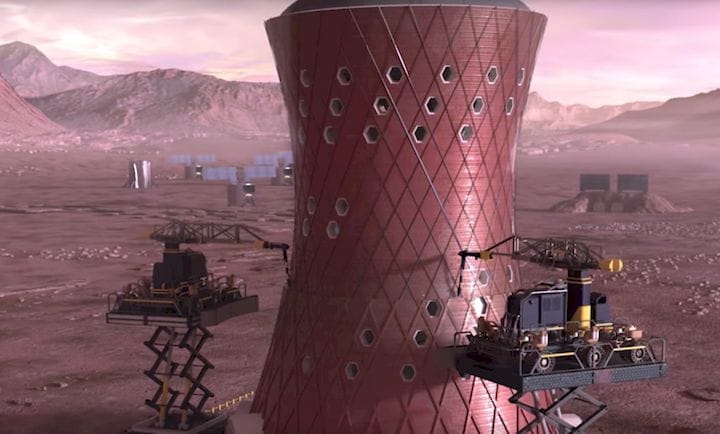![Concept of NASA’s 3D Printed Habitat competition under construction on Mars [Source: NASA]](https://fabbaloo.com/wp-content/uploads/2020/05/image-asset_img_5eb099cf12adc.jpg)
NASA announced three finalists for their ongoing “3D-Printed Habitat Challenge”.
We’ve been following the “3D-Printed Habitat Challenge” for some time now, notwithstanding their use of a hyphen for “3D Printing”. It’s been a fascinating journey as teams have had to undergo a series of difficult milestones to reach the final stage.
The finalists who will share a prize purse of US$100K, are:
-
SEArch+/Apis Cor – New York – US$33,954.11
-
Zopherus – Rogers, Arkansas – US$33,422.01
-
Mars Incubator – New Haven, Connecticut – US$32,623.88
NASA explains how they were selected:
“Eleven team entries were scored and awarded points based on architectural layout, programming, efficient use of interior space, and the 3D-printing scalability and constructability of the habitat. Teams also prepared short videos providing insight into their designs as well as miniature 3D-printed models that came apart to showcase the interior design. Points were also awarded for aesthetic representation and realism.”
Each team was required to provide a five-minute video of their concept. Although watching them all will take you fifteen minutes, I strongly encourage you to do so, as it seems we’re seeing the beginnings of a construction 3D printing revolution.
Here are the videos, in order of placement:
If you were able to watch them, I am certain you will agree with me that these all offer very different takes on 3D printed constructions, largely driven by the extreme needs of successfully operating on the harsh Martian surface.
Each team offered fantastic twists on design that are certainly valuable. I would very much like to combine all of these ideas together to form an even better solution, but I suspect that’s what NASA had in mind all along by running this competition.
For example, the first place winner, SEArch+/Apis Cor, provided a design that looks very much like a nuclear plant’s cooling tower, seen at top. But if you watch the video, you will see there are several important reasons for structuring the habitat in this way that have to do with radiation, air pressures and safety. Brilliant design!
This bizarre design, seen at top under construction, later includes escape chutes running alongside the habitat surface.
![A mobile 3D printer concept for Mars surface work [Source: NASA]](https://fabbaloo.com/wp-content/uploads/2020/05/image-asset_img_5eb099cf94402.jpg)
One entrant provided a kind of mobile 3D printer that was sealed from the outside atmosphere to ensure print reliability.
![A 3D printed Mars habitat concept [Source: NASA]](https://fabbaloo.com/wp-content/uploads/2020/05/image-asset_img_5eb099cfd5a8a.jpg)
Another proposed a modular approach, in which new modules could be continually added to form a much larger habitat over time. This makes sense, as an on-site 3D printer doesn’t really need to stop, as long as it has sufficient materials to proceed.
![The second place winner in NASA’s 3D Printed Habitat competition [Source: NASA]](https://fabbaloo.com/wp-content/uploads/2020/05/image-asset_img_5eb099d03569a.jpg)
That’s one other thing I noticed: several of the teams were using a combination of in-situ materials and Earth-sourced thermoplastics. While the designs were clearly functional, the use of non-local materials would obviously limit the expansion possibilities.
Which approach did you prefer?
Via NASA











Years of experimentation are leading to affirmation: 3D printing in space, for in-space use, is looking viable.